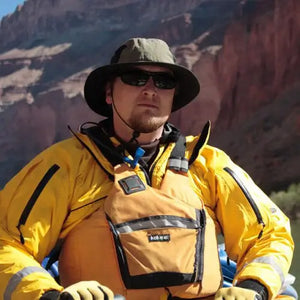Distinguishing the Waters: Kayaking vs. Canoeing
September 14, 2023

Kayaking and canoeing are both popular water-based activities that allow enthusiasts to explore lakes, rivers, and waterways, but they each offer unique experiences and come with distinct characteristics. While both involve paddling through water, the differences between kayaking and canoeing go beyond the shape of the vessel. In this article, we'll explore the key distinctions that set kayaking apart from canoeing and help you understand which one might suit your preferences.
Vessel Design and Structure:
The most noticeable difference between kayaks and canoes lies in their design and structure. Kayaks are typically sleek, low-profile boats that are enclosed with a cockpit and a snug-fitting spray skirt. This design keeps the kayaker's lower body protected from splashes and provides better maneuverability. Canoes, on the other hand, are open-top vessels characterized by their wider shape and higher sides. They offer more space for passengers and gear but may be more susceptible to wind and water splashes.
Paddle Type:
The paddles used in kayaking and canoeing also differ. Kayakers use a double-bladed paddle, with blades on both ends, allowing for efficient and symmetrical strokes on both sides of the kayak. Canoeists, however, use a single-bladed paddle, gripping it at one end and using it for alternating strokes on each side of the canoe.
Seating and Posture:
In kayaking, paddlers sit low in the cockpit with their legs extended forward, which provides stability and control. This lower center of gravity allows kayakers to maneuver more easily, especially in rough waters. In a canoe, paddlers typically kneel or sit on benches, providing a higher vantage point and a different perspective on the surroundings.
Maneuverability:
Due to its design, a kayak is generally more maneuverable than a canoe. The enclosed cockpit and double-bladed paddle allow kayakers to execute quick turns and navigate through tight spaces with greater agility. Canoes, while less nimble, offer stability and can carry larger loads, making them ideal for camping trips and longer journeys.
Stability and Balance:
Kayaks tend to have a lower initial stability, meaning they may feel tippier when getting in or out. However, they often have a higher secondary stability, which helps them stay upright when tilted. Canoes generally have a higher initial stability, making them more stable when stationary or carrying loads, but they might be less stable when tilted.
Use Cases:
Kayaking is well-suited for various water activities, such as whitewater kayaking, sea kayaking, and touring. Its design makes it a popular choice for individuals seeking adventure, skill development, and the ability to tackle different water conditions. Recreational canoeing is often favored for leisurely trips, family outings, and carrying equipment for camping or fishing. Its larger size and open design make it more accommodating for multiple passengers and gear. Whitewater canoes are specifically designed for navigating fast-moving, turbulent water, such as whitewater rivers and rapids. These canoes are often referred to as "whitewater canoes" or "river canoes." They are distinct from traditional recreational canoes, as they are built to handle the challenging conditions of whitewater.
Kayaking and canoeing offer distinct experiences, each catering to different preferences and objectives. Whether you're drawn to the sleek maneuverability of a kayak or the spaciousness of a canoe, both activities provide opportunities for adventure, relaxation, and exploration on the water. Understanding the unique characteristics of each sport can help you make an informed decision about which one aligns better with your interests and goals. So, whether you're gliding through rapids in a kayak or peacefully paddling down a calm river in a canoe, embrace the opportunity to connect with nature and enjoy the splendor of aquatic exploration.
Explore a huge selection of paddlesport gear at Outdoorplay, where our dedicated customer service team is ready to assist you seven days a week. Plus, enjoy the added perk of free shipping on orders exceeding $49 to anywhere within the contiguous United States.
